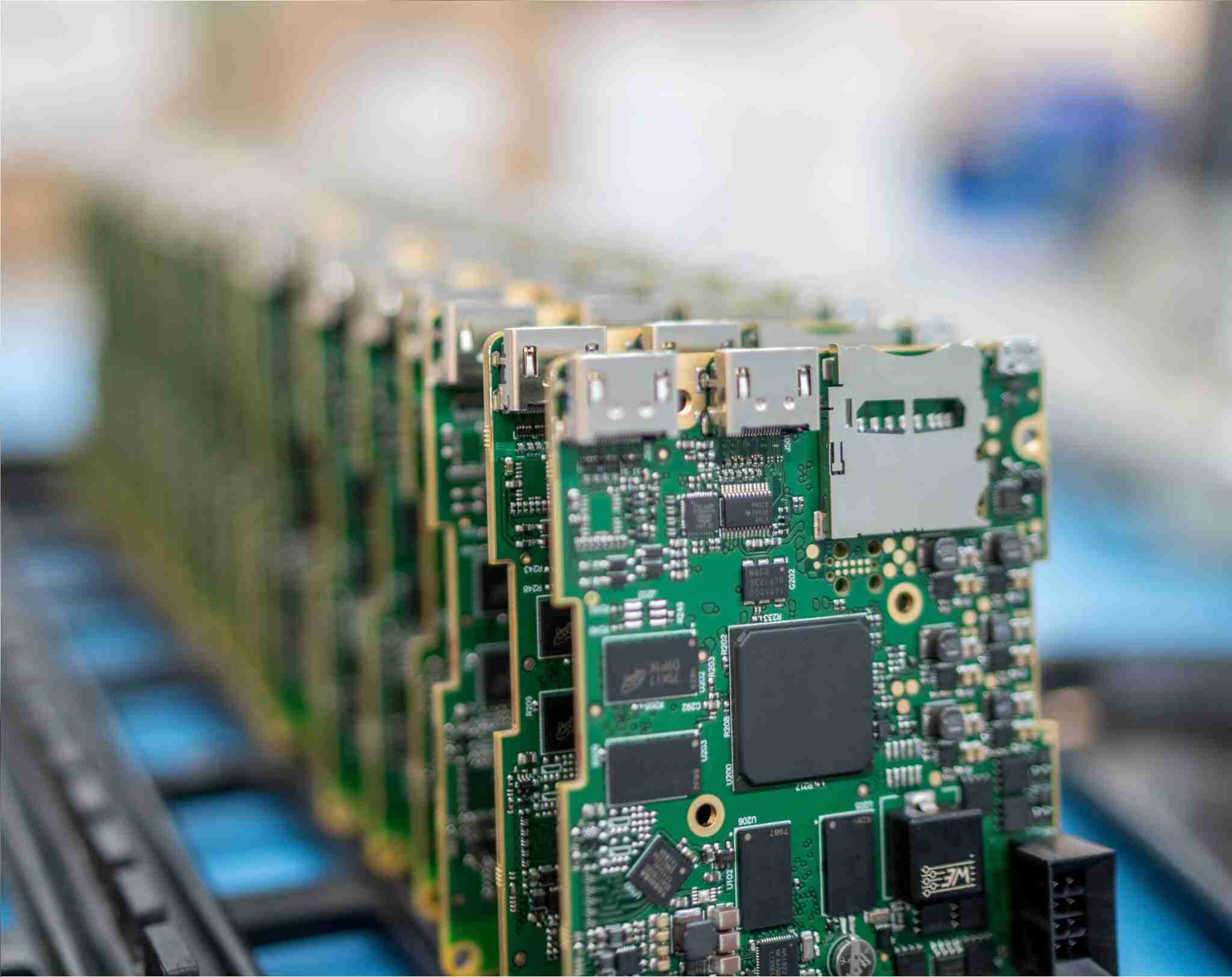It is generally divided into three categories: triangular temperature curve, heating-keeping-peak temperature curve, and low peak temperature curve.
(1) Triangular temperature curve for simple PCBA products
For simple products, the triangular temperature curve can be used because the PCB is easier to heat, the temperature of the components and the printed circuit board is close, and the temperature difference on the PCB surface is small.
When the solder paste has the right formula, the triangular temperature curve will produce brighter solder joints. However, the flux activation time and temperature must adapt to the higher melting temperature of the lead-free solder paste. The heating rate of the triangular curve is controlled as a whole, generally, 1-1.5℃s, and the energy cost is lower than the traditional heating-heating-heating-peak curve. This curve is generally not recommended.
(2) Recommended heating-heating-heating-peak temperature curve
The heating-heating-heating-peak temperature curve is also called a tent-shaped curve. The figure shows the recommended heating-heating-heating-peak temperature curve (same as Figure 1), where curve 1 is the temperature curve of Sn37Pb solder and curve 2 is the temperature curve of lead-free Sn-Ag-Cu solder paste. As can be seen from the figure, the limit temperature of components and traditional FR4 printed circuit boards is 245℃, and the process window of lead-free welding is much narrower than that of Sn-37Pb.
Therefore, lead-free welding requires slow heating, sufficient preheating of PCB, and reduction of PCB surface temperature difference △ to make the PCB surface temperature uniform, and then achieve a lower peak temperature (235~245℃) to avoid damage to components and FR-4 substrate PCB. The requirements of the heating-insulation-peak temperature curve are as follows.
1. The heating rate should be limited to 0.5~1℃/s or less than 4℃/s, depending on the solder paste and components.
2. The formula of the flux component in the solder paste should fit the curve. Excessive insulation temperature will damage the performance of the solder paste.
3. The second temperature rise slope is at the entrance of the peak area, with a typical slope of 3℃/s. The time above the liquidus line requires 50~60s, and the peak temperature is 235~245℃.
4. Cooling zone: To prevent the growth of crystal particles at the solder joint and avoid segregation, the solder joint needs to be cooled quickly, but special attention should also be paid to reducing stress. For example, the maximum cooling rate of ceramic chip capacitors is -2 to -4°C/s.
(3) Low peak temperature curve
The low peak temperature curve is to first add slow heating and sufficient preheating to reduce the temperature difference on the PCB surface. In the reflow zone, large components and large heat capacity areas generally lag behind small components in reaching the peak temperature. Figure 3 is a diagram of the low peak temperature (230-240℃) curve. In the figure, the solid line is the temperature curve of the small component, and the dotted line is the temperature curve of the large component.
When the small component reaches the peak temperature, maintain a low peak temperature and a wide peak time, allowing the small component to wait for the large component; wait until the large component also reaches the peak temperature and maintains it for a few seconds, and then cool down. This measure can prevent damage to components.
The low peak temperature (230~240℃) is close to the peak temperature of Sn-37Pb, so the risk of damaging the equipment is small and the energy consumption is low; but it has relatively high requirements for the layout of the PCB, thermal design, adjustment of the reflow welding process curve, process control, and lateral temperature uniformity of the equipment.
The low peak temperature curve does not apply to all products. In actual production, the temperature curve must be set according to the specific conditions of the PCB, components, solder paste, etc. A complex board may require 260℃.
Through the study of welding theory, it can be seen that the welding process involves physical reactions such as moisture, viscosity, capillary phenomenon, heat conduction, diffusion, dissolution, chemical reactions such as flux decomposition, oxidation, and recovery, and also involves metallurgy, alloy layer, metallography, aging, etc. It is a very complex process. In the SMT patch process, it is necessary to use welding theory to correctly set the reflow welding temperature curve.
In PCBA production, it is also necessary to master the correct process method and, through process control, try to achieve zero (no) or near-zero defect reflow welding quality through printing solder paste, mounting components, and finally the SMA pass rate coming out of the reflow welding furnace. At the same time, It also requires that all solder joints reach a certain mechanical strength. Only in this way can the product have high quality and high reliability.









